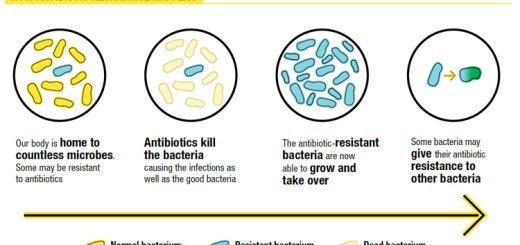Blood pressure, structure, functions and Mechanism of blood clotting
Blood is the principal medium in the transport process, Its colour is a red viscous liquid, PH equals 7.4 (weak alkaline), and Volume is 5 – 6 liters of blood on average, The structure of blood: connective tissue consists of Plasma, Red blood cells, White blood cells, and Blood platelets.
Plasma
Plasma is the tissue fluid of blood, It represents 54 % of the blood volume, It contains 90 % water, 1 % inorganic salts such as Ca++, Na+, Cl− and (HCO3)−, 7% proteins such as albumin, globulin, and fibrinogen, 2 % other components as the absorbed food (sugars and amino acids), hormones, enzymes, antibodies and wastes (urea).
RBCs – Red blood cells (Erythrocytes)
They are the most abundant blood cells, they are nearly about 4: 5 million cell/mm³ in males, 4 : 4.5 million cell/mm³ in females, Their shape is round corpuscles and biconcave, They are produced in the bone marrow of the backbone.
Each cell is destroyed after 120 days, They circulate about 172,000 circulations, They are destroyed in the liver, spleen, and bone marrow, They are enucleated cells that contain haemoglobin ( protein + iron ) which gives the blood its red color.
Functions
- Transporting oxygen from the two lungs to all the body parts, where in the two lungs, the haemoglobin combines with oxygen to form a pale red oxyhaemoglobin, The oxyhaemoglobin carries the oxygen to the different parts of body, where it leaves the oxygen and changes into haemoglobin.
- Transporting CO2 from all the body parts to the two lungs , where the haemoglobin combines with CO2 inside the body cells to form a dark red carbo-aminohaemoglobin, Carbo-aminohaemoglobin carries CO2 to the two lungs, where it leaves CO2 and changes into haemoglobin.
WBCs – White blood cells (Leucocytes)
The number of white blood cells is 7000 cell/mm³, this number increases during diseases, Their shape is colourless and nucleated with many shapes, They are formed in the bone marrow, spleen, and lymphatic system, some of their kinds live for 13 – 20 days.
Functions: They are produced in many types, each type with a specific function, but the main function is the protection of body against the infectious diseases through the following :
They circulate continuously in the blood vessels, attack the foreign particles, and destroy and engulf them, Some of them produce antibodies.
Blood platelets
The number of blood platelets is 250, 000 platelets /mm³, Their shape is non-cellular and very small in size, Their size is one-fourth of the RBCs, They are produced from the bone marrow, They live for about 10 days, They play a role in blood clot after the injury.
Blood clot
Blood clot occurs when a blood vessel is cut, The importance of clotting: Blood forms a clot to prevent the bleeding before it leads to shock followed by death.
Factors of coagulation (clotting) of blood:
Mechanism of blood clotting
In case of the presence of blood clotting factors, the steps are shown as the following :
The blood platelets together with the destroyed cells form a protein called thromboplastin.
Platelets + Destroyed cells → Thromboplastin in the presence of ( clotting factors in blood )
In the presence of calcium ions (Ca++) and blood clotting factors in the plasma, thromboplastin activates the conversion of prothrombin into thrombin.
Prothrombin → Thrombin ( Active enzyme ), in the presence of Thromboplastin, Ca++, clotting factors
Where Prothrombin is a protein that is secreted in the liver with the help of vitamin K and is passed directly into the blood.
Thrombin catalyzes the conversion of fibrinogen (soluble protein in plasma) into fibrin (insoluble protein)
Fibrinogen (Soluble protein) → Fibrin (Insoluble protein) in the presence of Thrombin
Fibrin precipitates as a network of microscopic interlacing fibers where the blood cells are aggregated, forming a clot that blocks the cut in the damaged blood vessels.
Reasons for the non-clotting of blood inside the blood vessels
- Blood runs in a normal fashion inside the blood vessels without slowing down.
- Platelets also slide easily and smoothly inside the blood vessels in order not to be broken.
- The presence of heparin (it is secreted by the liver) which prevents the conversion of prothrombin into active thrombin.
Functions of blood
Transportation: It transports the digested food substances, waste nitrogenous compounds, hormones, and some enzymes (active or inactive) through the plasma, It transports O2 and CO2 through RBCs.
Controlling: It controls the processes of metabolism, It keeps the body temperature at 37° C, It regulates the internal environment (homeostasis) such as osmotic potential, amount of water, and pH in the tissues.
Protection: It protects the body against microbes and pathogenic organisms through the immunity involving the lymphatic system (WBCs), It protects the blood itself against bleeding by the formation of blood clots.
Blood Pressure
The blood is a viscous liquid that circulates within the arteries and veins smoothly by the process of heartbeats, but to pass within the microscopic blood capillaries, it needs pressure.
The maximum blood pressure is measured as the ventricles contract and the largest blood pressure is measured in the arteries nearer to the heart.
The minimum blood pressure is measured as the ventricles relax and the blood pressure in the venules is very low (about 10 mm Hg), This pressure is not sufficient to move the blood back to the heart, So, the returning of blood to the heart depends on:
- The skeletal muscles near the veins: when these muscles contract, they put pressure on the collapsible walls of veins and the blood contained in these vessels.
- Valves of veins: that prevent the backward flow of blood.
Measurement of blood pressure
The blood pressure is measured using mercuric instruments sphygmomanometers, Their readings consist of two numbers:
- Maximum: measured during the ventricular contraction which represents the maximum blood pressure.
- Minimum: measured during the ventricular relaxation which represents the minimum blood pressure.
Example: 120/80 mm Hg is the normal value of blood pressure in youth, so, the number of 120 mm Hg represents the ventricular contraction (systolic) and 80 mm Hg represents the ventricular relaxation (diastolic).
Sphygmomanometer
Structure: a mercuric tube and a scale board.
The idea of working: blood pressure can be measured according to the elevation of mercury level inside the tube and it is represented by a number on the scale board.
Method of measurement
The values of blood pressure are determined by listening to the heartbeats, and also between one beat and another, as the following :
on hearing the sound of the heartbeat, the doctor can determine the maximum value of blood pressure, referring to the contraction of the ventricles (systolic).
When the sound disappears, the doctor can determine the minimum value of blood pressure, referring to the relaxation of the ventricles (diastolic).
Blood pressure increases gradually with aging and it must be under medical control to avoid its harmful effects, There are some digital instruments to measure blood pressure, but they are not as accurate as mercuric instruments.
The blood pressure increases in arteries gradually by aging, leading to the increase of resistance against the passage of blood through them.
Human Transport system, Structure of human circulatory system (Heart, blood vessels and blood)













